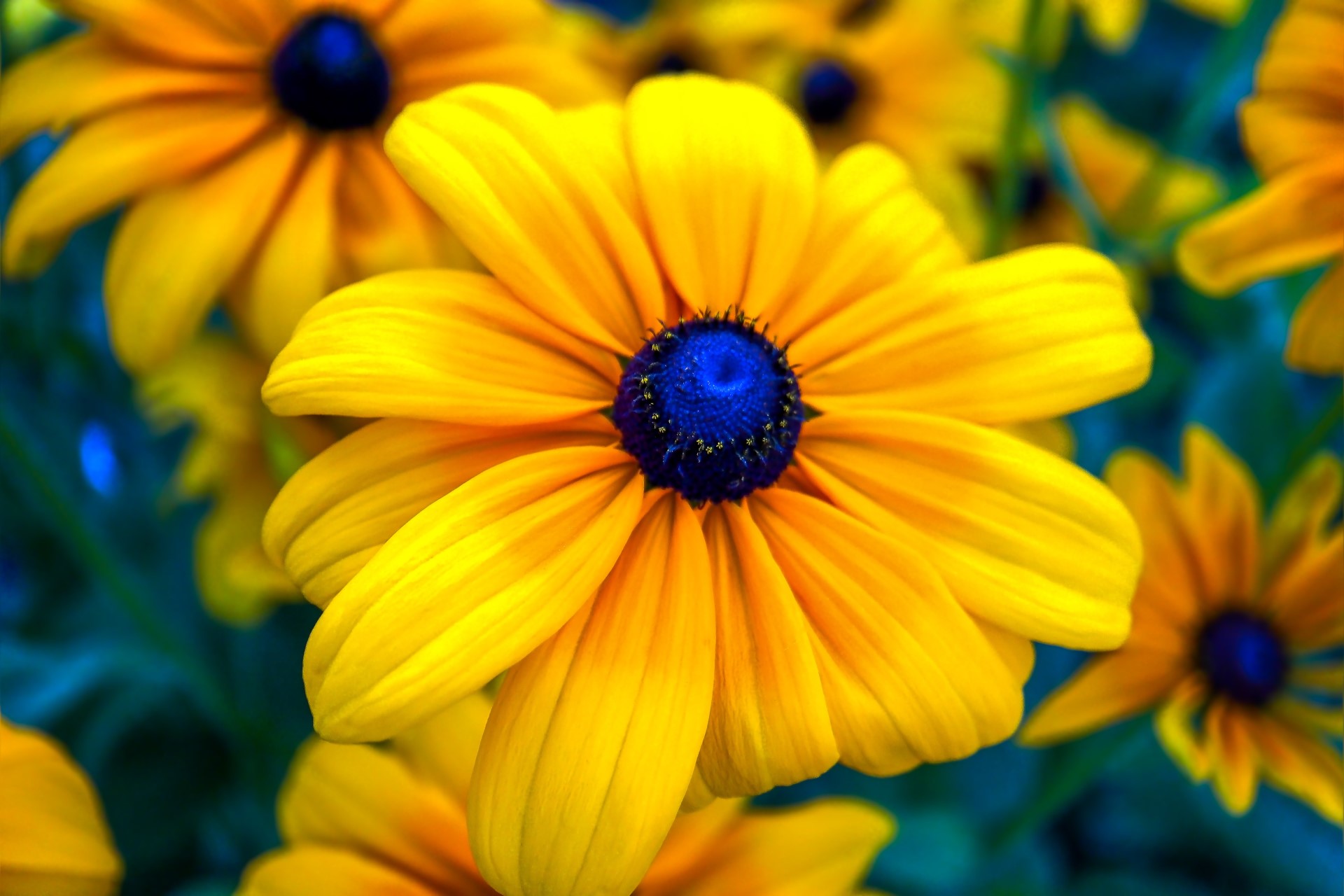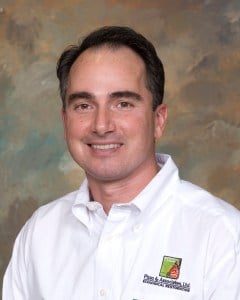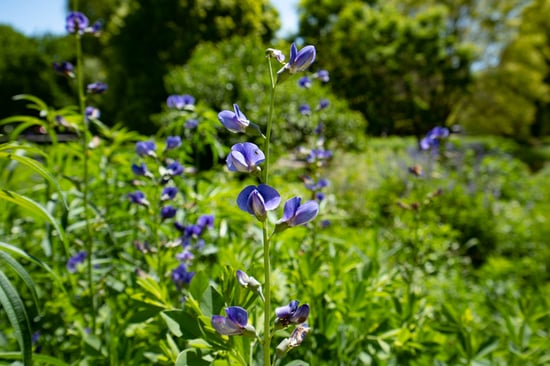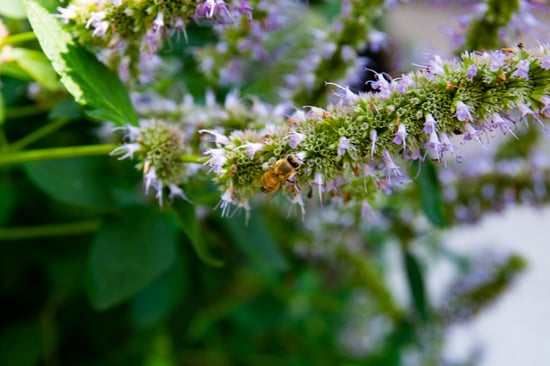
If you’ve long believed that you must choose between a garden that looks like a magazine spread and one that helps the Earth, think again: Jack Pizzo is here to set you straight.
(Download a free PDF of this interview to take with you, and share it with family and friends!)
With the global climate crisis in full swing and environmental panic mounting, more people than ever are asking: “What can we do?”
When they’re told to change their gardens, plant more natives and keep a weather eye on their pollinator populations, however, many folks become a bit wary. They like their gardens how they are, thankyouverymuch.
That’s where The Pizzo Group comes in, self-described as “a family of four companies that restores ecosystems and provides sustainable landscape solutions that are both beautiful and functional.”
Jack Pizzo, president and senior ecologist of all four companies, as well as the past president of the Illinois Chapter of the American Society of Landscape Architects, is happy to report that interest in natural landscapes is rising, from residential backyards to large swaths of public land.
Increasingly, individuals, organizations and municipalities are reaching out to design landscapes that, as Pizzo says, look “like Martha Stewart’s perennial garden except that it’s native plants. People are beginning to see nature as an asset and not a liability.”
A development of which, it goes without saying, we are huge fans.
That’s not to say we’ve fixed every problem in the landscape industry or that we’re perfect stewards, however. Far from it. Recently we were lucky enough to sit down with Jack and have a heart to heart on these issues.
No Time for Hopelessness
 While the media is busy reporting steep declines in mental health among the young in response to climate fears, Pizzo is busy battling the hopelessness. From his companies to his private properties, he strives to show that our native landscapes have lots of life left in them.
While the media is busy reporting steep declines in mental health among the young in response to climate fears, Pizzo is busy battling the hopelessness. From his companies to his private properties, he strives to show that our native landscapes have lots of life left in them.
“I practice what I preach, as I have two 40-acre farms in Decal County,” he says. The first is host to the business, sited on 32.5 acres of remnant prairie and wetland. Once tilled, today “we’ve restored it back to prairie and have seen 147 species of birds here in the middle of thousands of acres of beans and corn.”
Pizzo has put a conservation easement on it to ensure this little haven remains a protected space.
“Then I bought a property at the north end of the county where I built my home,” Pizzo continues. That 40 acres was originally beanfield and is now restored wetland, with a conservation easement on 37 of it. “It now accommodates 211 species of native plants and 148 species of native birds.” Again, that’s in the middle of 38,000 acres of corn and beans.
“People lament we can never restore the earth,” he says, “but I’m like, ‘Nope! It works!’ Do I want to destroy more of it? No. But when it does get destroyed, I’ve watched sites go from zero to 60.”
With such accolades under his belt personally, it’s no wonder The Pizzo Group has won 148 awards and is making strides toward sea change within the industry.
Confronting the Biggest Issues in the Landscape Industry Today
While we have seen great improvements in the last several decades, there remain some major bugbears in the general approach to landscaping, as well as in the native landscaping industry.
A paramount concern, in Pizzo’s opinion, is integrative design. Or more specifically, the fact that we don’t see nearly enough of it.
He describes integrative design as “a collaboration between the disciplines of architecture, civil engineering, building and construction trades, landscape architecture and ecology.”
Too often, various professionals and stakeholders work in siloed fashion, which impacts the success of the landscape negatively. For instance, “There might be a good design, but an unqualified contractor was chosen. So nobody was there to supervise the installation and afterward there was little to no maintenance. You end up with a failed site.”
In such a situation, you cannot create the feedback loop that keeps ecologies healthy. Nor can you assess problems effectively: “There’s nobody going back and doing the forensic work to say ‘What caused this? Let’s modify our design and plants to account for these types of failures.’”
Potential sources of trouble include:
- Improperly graded sites
- Inappropriate plant palettes
- Inadequate care
- Maintenance designed to meet specifications rather than to meet criteria
This last is especially important.
Let’s Rethink the Definition of Maintenance STAT
 The difference between maintenance and stewardship is something we discuss a lot at Ecogardens. The first is very prescriptive, leaving little room for response to the inherent mutability of the natural world. The second, on the other hand, is a partnership between maintainers and landscape.
The difference between maintenance and stewardship is something we discuss a lot at Ecogardens. The first is very prescriptive, leaving little room for response to the inherent mutability of the natural world. The second, on the other hand, is a partnership between maintainers and landscape.
Paying attention to this difference is a prime way to keep landscapes sound and encourage more people to think environmental.
Specifically, Pizzo advocates moving to a performance-based payment model for maintenance contractors. So rather than detailing means and methods – “you have to mow three times and keep it six inches high and apply three herbicide treatments” – we set specifications instead. Performance criteria might include how much coverage increases on a new site, or how many species survive. That puts the onus on them to perform, with a third party affirming that the work is getting done.
This approach accounts for unusually wet springs, cold winters, parched summers, floods, insect depredation and more, and the steward gets to decide the best way to respond. In a way, we’re letting Mother Nature dictate the care a given site will receive, and the professional simply follows her lead.
Perhaps it goes without saying that in taking this approach to a landscape, you’re far less likely to need harsh chemicals and artificial nutrient inputs. Avoiding them protects plants, pollinators, other wildlife and the surrounding ecology.
That may mean moving much of this work from the hands of landscapers to those of ecologists, Pizzo says.
“Because the landscape industry has a low bar to entry, you’re looking at people who don’t have a lot of technical training or horticultural ecology knowledge,” he points out. “They think you put the seeds or plugs in and it should grow, right? It’s weeds!”
It’s not just weeds, though, and these plants need specific care like any other plant. Likely they’re not as demanding as exotics, and that’s a good thing – but they still need TLC. Which brings us full circle, back to that feedback loop. We have to learn from the lessons of the past: what worked, what didn’t, what we should do now, what we shouldn’t do again.
“Those who do not study history are doomed to repeat it,” Pizzo says, paying homage to the George Santayana quote.
The Right Approach: Making Non-Native Plants NOT Grow
 If that subheading threw you for a bit of a loop, you’re not alone.
If that subheading threw you for a bit of a loop, you’re not alone.
It’s the truth, though, says Pizzo. The goal with native landscaping isn’t to make the natives grow. It’s to ensure they’re so healthy that the non-natives cannot grow.
“If you use the right species and manage well, then they fill in, drop seed and keep growing,” he explains. That means keeping a careful eye on your plant palette to spot invasives. “Keep your friends close but keep your enemies closer. Can you tell I’m Sicilian?”
That means educating people about which species are appropriate to their landscapes and doing away with this notion that native plants are weeds. Which, he’s found, isn’t as hard as one might think. “If I call them hardy or drought-tolerant and we say we are going to design them in, clients don’t question it.”
Native landscapers take note: sometimes all your clients need is a bit of reframing to jump on board.
Beyond that, the most important mindset one can bring to this industry is that of “cradle to cradle.” From plastic use to new technologies, it’s important always to ask questions like:
- How long will this last?
- What will it take to clean this and use it again?
- What kind of waste does this product create?
- How can we get our suppliers to help minimize it?
For instance, The Pizzo Group expects their supplies to take back and reuse pallets they use for delivery, rather than leave them there for disposal. Not only does this minimize on-site waste, it encourages the companies with which they work to bring a cradle-to-cradle mindset to their own work.
A Group Effort: Parting words from Pizzo
The whole native landscaping and ecofriendly thing isn’t a solo effort.
“Do not try to learn everything about sustainability on your own,” says Pizzo. “There are professionals out there who, if you pick up the phone and call and ask the question, are going to give you a good answer. But don’t just go to anybody who sells prairie seed or native plants. Look for the people who have produced successful projects.”
To that end, Jack Pizzo invites you to call him any time with questions, comments, concerns, ideas or Sopranos references.
Okay, maybe not that last one. But everything else ... definitely.
Email: jackp@pizzo.info
Website: https://pizzogroup.com/
Cell phone: (815) 351-3250
And as always, feel free to get in touch with us at any time or download that free PDF now.

